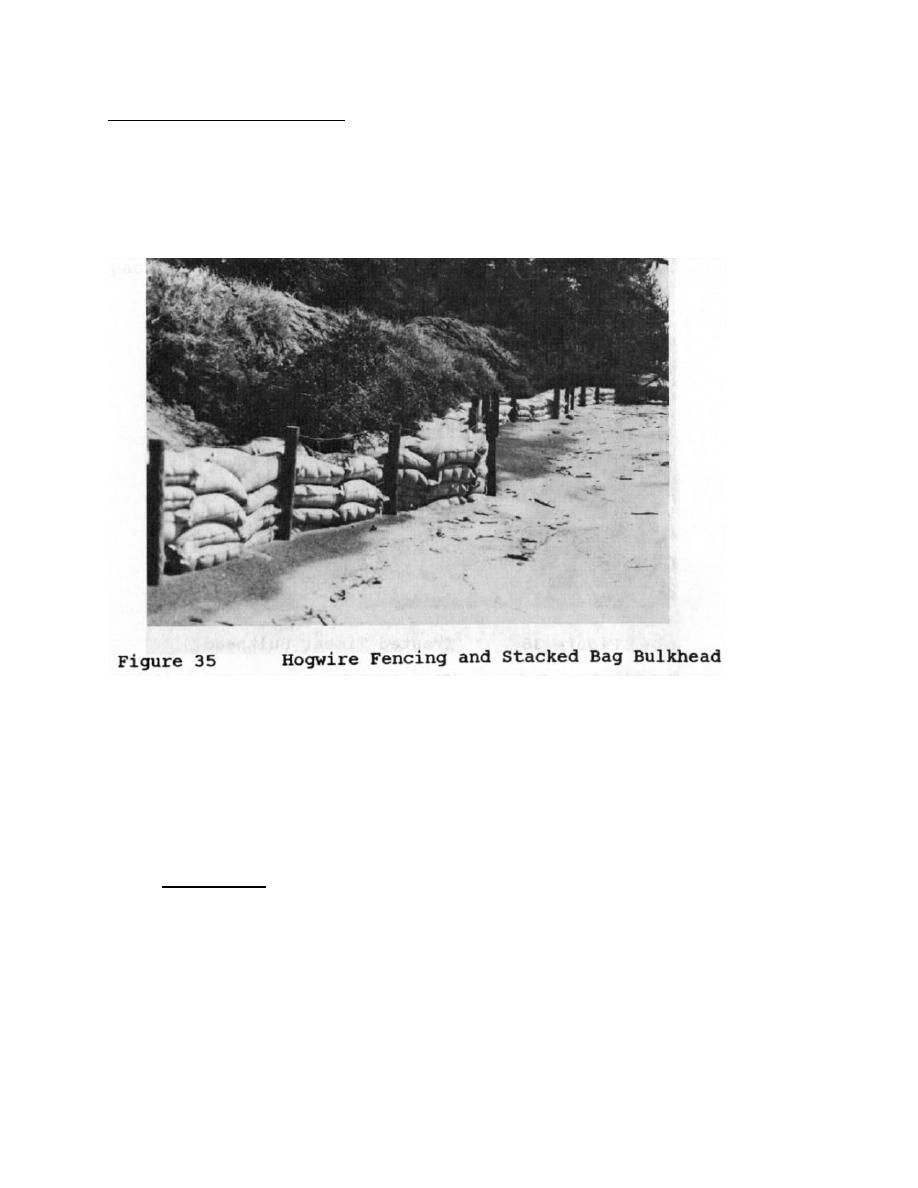
Hogwire Fencing and Stacked Bags
Wave Height Range: Below five feet.
Hogwire fencing attached to posts can be used to support sand bags stacked on the landward side
of the fence (Figure 35) to form a relatively inexpensive structure. The sand bags are vulnerable to
tearing, however, if after being undercut by toe scour, they slide against the hogwire fencing.
For best performance, use small-mesh wire with a PVC coating, because bare wire fencing tends to
cut the bags. Tearing of the front row of bags can be prevented by filling them with a sand cement
mixture. Burlap bags can be substituted for the more expensive bags when a sand-cement mixture is
used. The material and seams of all sand-filled bags must be resistant to ultraviolet light.
Place the bottom bags and fencing in a trench excavated to at least the depth of anticipated toe
scour.
Anchor or brace the posts, or embed them deeply, allowing for loss of support because of toe
scour. Provide adequate drainage of the retained embankment and place stone at the toe of the bulkhead.
Treated Timber
Wave Height Range: Below five feet.
Horizontal, pressure-treated planks can be spiked to the landward side of posts which are anchored
to deadmen or piles in the backfill. The planks must be backed by filter cloth or graded stone to prevent
soil losses through the cracks. Riprap toe protection should be provided (Figure 36).
68



 Previous Page
Previous Page
